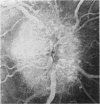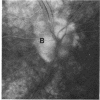Abstract
In all of 100 consecutive patients referred for retinal angiography with a clinical diagnosis of probable or possible papilloedema a definite diagnosis was made from neurological assessment, neuroradiological investigations, and follow-up. The cases have been divided into 2 groups--those with proved papilloedema and those which have been called either normal or pseudopapilloedema. In all cases the retinal angiograms showed normal or increased optic disc vascularity and normal or increased early and late disc fluorescence. On the basis of these alone clear differences could be shown between the groups. All cases with papilloedema showed a combination of either excess late fluorescence with excess early fluorescence or excess late fluorescence with excess disc vascularity. Only 2 cases of pseudopapilloedema (both with optic disc drusen) showed this combination, and in both the pattern of disc fluorescence was different from that seen in papilloedema. Retinal angiography therefore seems to be of considerable value in differentiating true from pseudopapilloedema, though this is possible only when each stage of the angiogram is carefully studied.
Full text
PDF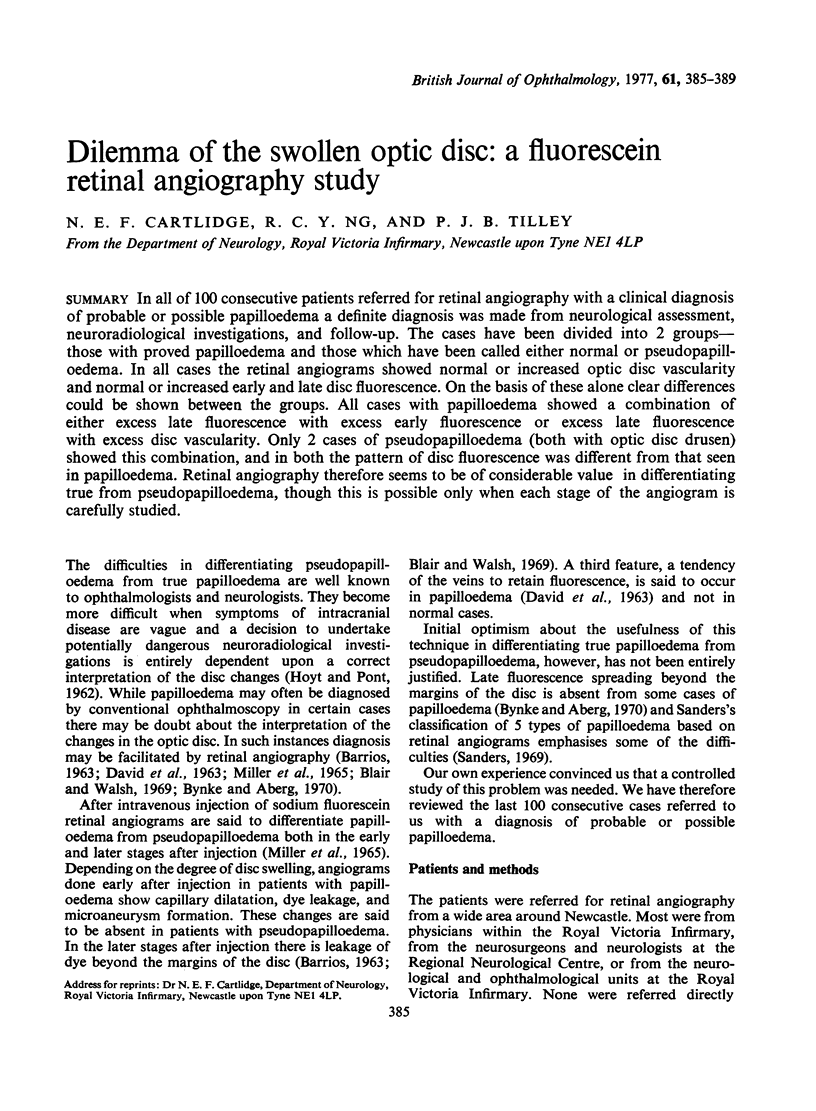
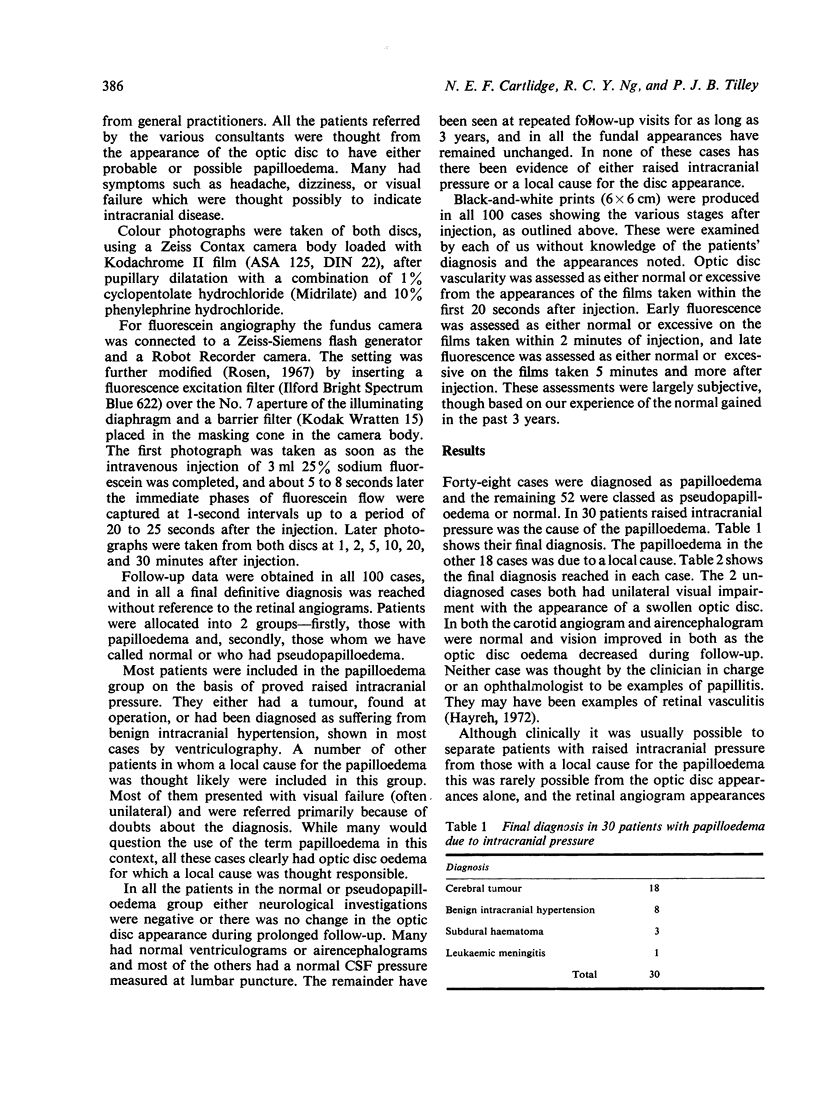
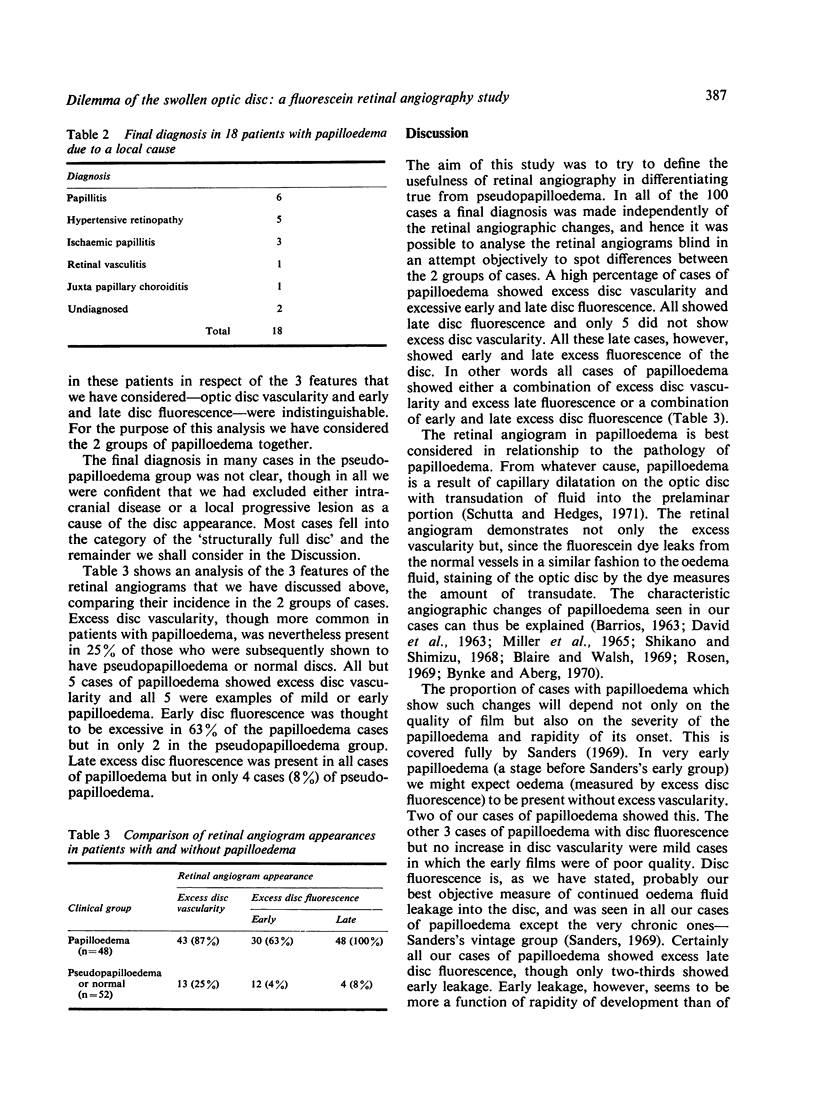
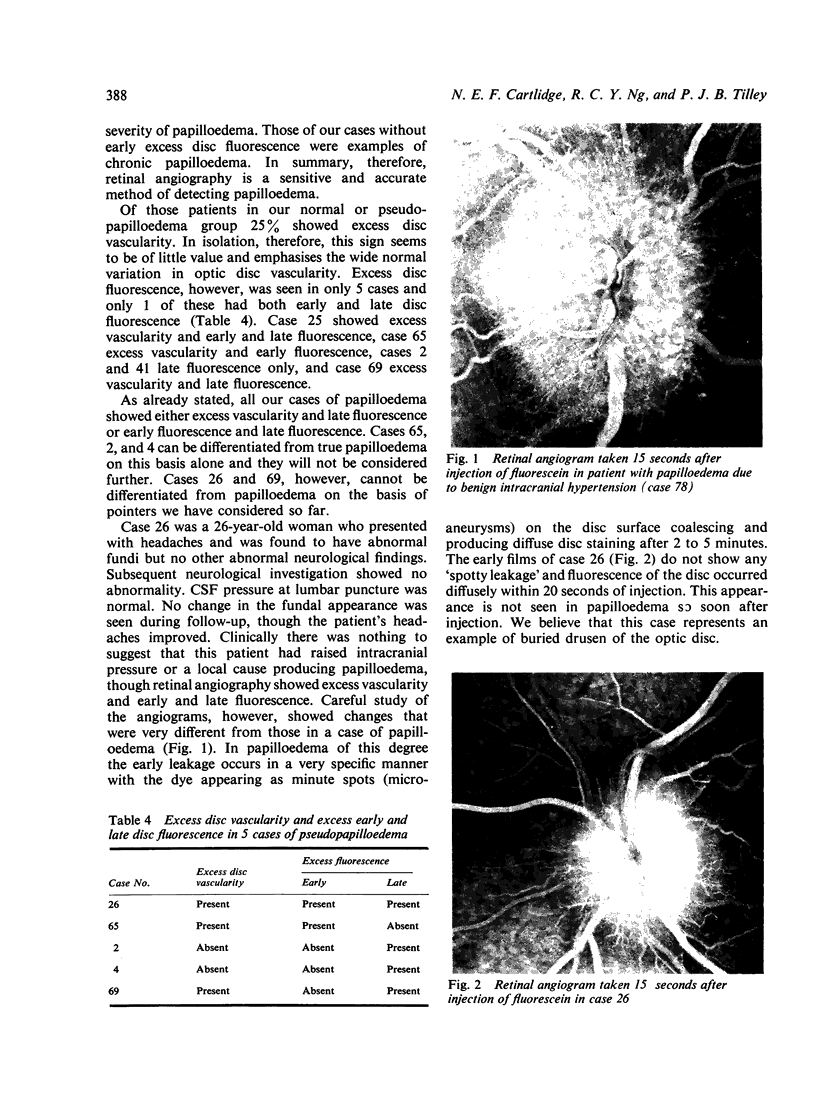
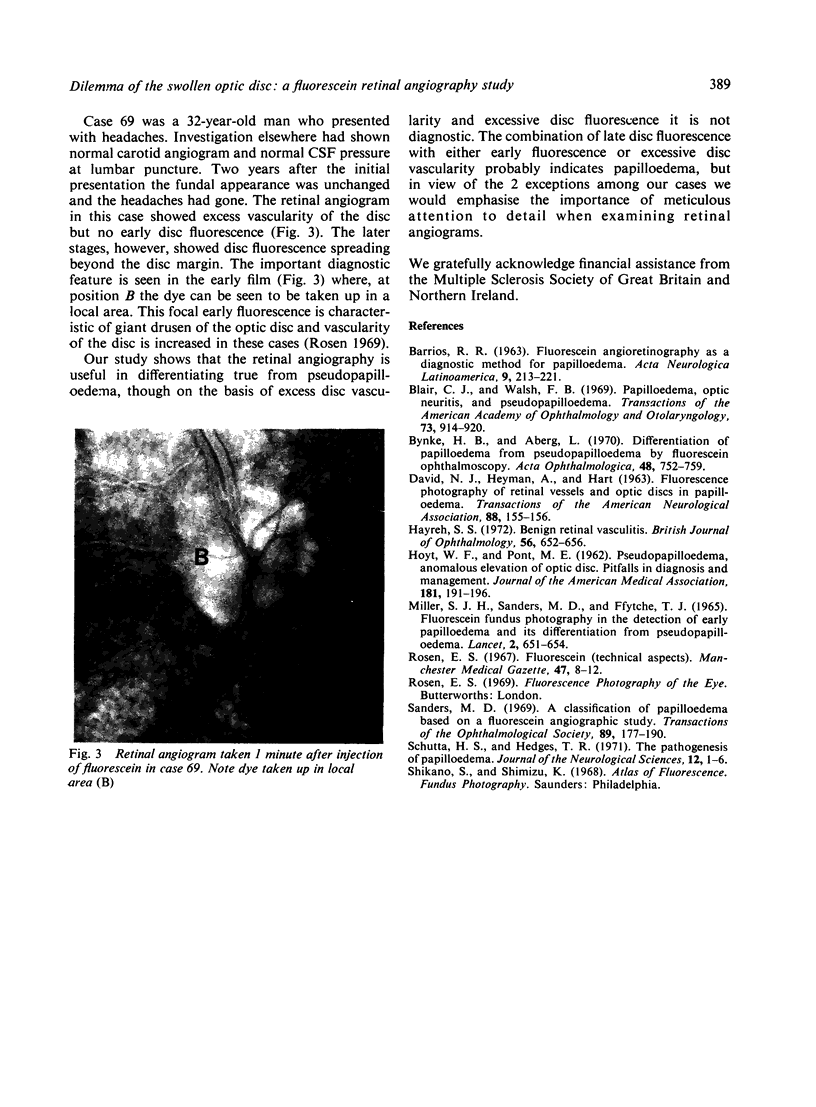
Images in this article
Selected References
These references are in PubMed. This may not be the complete list of references from this article.
- Bynke H. G., Aberg L. Differentiation of papilloedema from pseudo-papilloedema by fluorescein ophthalmoscopy. Acta Ophthalmol (Copenh) 1970;48(4):752–758. [PubMed] [Google Scholar]
- DAVID N. J., HEYMAN A., HART L. M. FLUORESCENCE PHOTOGRAPHY OF RETINAL VESSELS AND OPTIC DISCS IN PAPILLEDEMA. Trans Am Neurol Assoc. 1963;88:155–158. [PubMed] [Google Scholar]
- HOYT W. F., PONT M. E. Pseudopapilledema: anomalous elevation of optic disk. Pitafalls in diagnosis and management. JAMA. 1962 Jul 21;181:191–196. doi: 10.1001/jama.1962.03050290013003. [DOI] [PubMed] [Google Scholar]
- Hayreh S. S. Optic disc vasculitis. Br J Ophthalmol. 1972 Sep;56(9):652–670. doi: 10.1136/bjo.56.9.652. [DOI] [PMC free article] [PubMed] [Google Scholar]
- Miller S. J., Sanders M. D., Ffytche T. Fluorescein fundus photography in the detection of early papilloedema and its differentiation from pseudo-papilloedema. Lancet. 1965 Oct 2;2(7414):651–654. doi: 10.1016/s0140-6736(65)90393-4. [DOI] [PubMed] [Google Scholar]
- Rosen E. Fluorescein. 1. Technical aspects. Manch Med Gaz. 1967 Oct;47(1):8–passim. [PubMed] [Google Scholar]
- Schutta H. S., Hedges T. R. Fine structure observations on experimental papilledema in the rhesus monkey. J Neurol Sci. 1971 Jan;12(1):1–14. doi: 10.1016/0022-510x(71)90248-6. [DOI] [PubMed] [Google Scholar]



